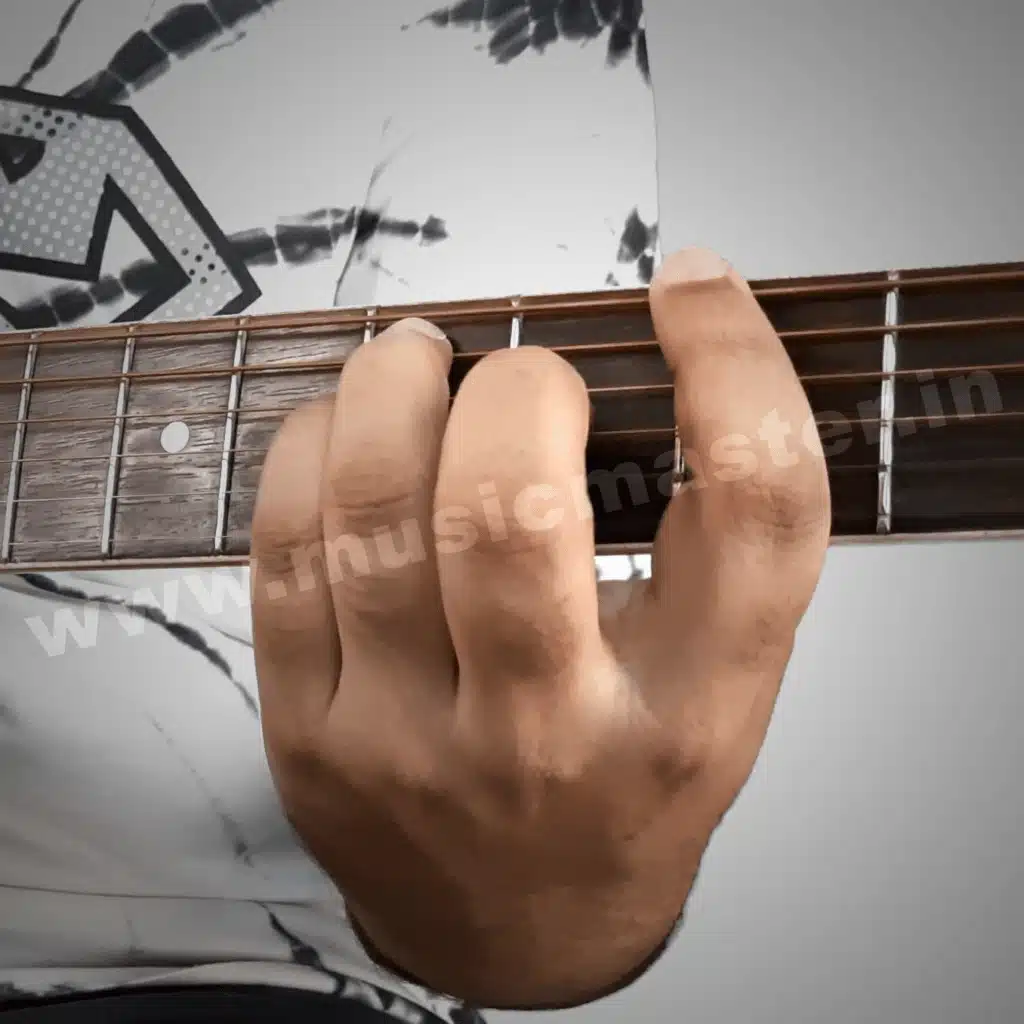So, if you want to spice up your guitar playing or simplify your understanding on playing chords in general, playing power chords is a way to go. Power chords are used extensively in songs of the musical genres pop-rock, metal or other similar genres featuring heavily distorted guitar tones. In other words, these chords are played in really cool sounding songs. It is also played sometimes in other genres like blues or jazz or even on the acoustic guitar, but it is favourably played on the electric guitar with huge distorted tones mostly in heavy punk-rock type of songs.
The origin of the power chords dates way back in the 50s supposedly pioneered by blues guitarists Willie Johnson and Pat Hare. Link Wray played power chords in his single hit ‘Rumble’, and is considered to be the Father Of The Power Chord.
It is still used in many rock/metal songs. Some iconic rock songs like Smoke On The Water (Deep Purple), Eye Of The Tiger (Survivor), I Love Rock N Roll (The Arrows/Joan Jett’s cover version), or even a majority of AC/DC’s songs like Back In Black and Long Way To The Top If You Wanna Rock N Roll feature frequent use of power chords.
There are also a number of Tamil songs that feature these heavy-hitting type of chords like Uyirin Uyirae (Kaakha Kaakha), Unakkulle Mirugam (Billa 2), Po Nee Po Remix – The Scream of Love (Moonu), Sarigame/Secret Of Success (Boys) and even the recent 2023 viral hit song Bloody Sweet (Leo).
What is a Power Chord?
A power chord simply consists of two notes i.e., the root note and the 5th note in its respective major or minor scale. This is why there is the number 5 next to it (like C5, B♭5, etc.). It is quite easy to formulate the power chord of any note. Take the C power chord for example. It consists of two different notes i.e., C and G.
Power Chord Guitar Chart

If you recall all the notes in the C major scale, G is the 5th note. So, this note is added to the root note C and the C power chord is created. Since the 5th note is added, this chord is alternatively called C5.
Are Power Chords Major or Minor Chords?
The answer is: it is neither! Power chords don’t theoretically fall under the major or minor category since it only has the root note and the fifth note of the major or minor scale. Unlike most major and minor chords comprising of the 3rd note interval in its triad to determine whether the chord is a major or minor, a power chord is just a two-note chord with just the root note and the fifth note interval. The fifth note in any major or minor scale does not come under the major or minor category. Hence this interval is aptly named ‘the perfect fifth’.
How to Play Power Chords?

Let’s start with the C power chord. So, to hold down the C5 chord on the guitar, start by positioning your fretting hand between the 3rd and 5th frets. Use your pointer/index finger to hold down the root note C at the 3rd fret on the 5th string. You may use either the ring or the little finger to hold down the 4th string at the 5th fret (which is the 5th note of the scale – G). Now, with your picking hand, just pluck these two strings.

Additionally, you may hold down the 3rd string at the 5th fret containing the higher octave of the root note C. For this, you may have to use your pinkie finger, and add your ring finger at the 5th fret on the 4th string (if you haven’t already done so). This chord shape is commonly played across the guitar fret-board forming various power chords depending on the root note and the perfect fifth interval.
Power Chords Are Movable Chord Shapes
Interestingly, the very same chord shape can be played anywhere on the guitar neck. When this chord shape is moved from the 3rd fret up by two more frets, then the root note is now on the 5th and 7th frets on the 5th and 3rd strings. So, this chord is now the D power chord or D5 with the perfect fifth interval located between the two strings on the 4th string at the 7th fret. Alternatively, when this chord shape is shifted down by two frets, the chord is called B♭5 or the B♭ power chord.

The same is applicable when you hold a shape on the 6th, 5th and 4th strings, with the root notes held by the index and little fingers on the 6th and 4th strings respectively, while the 5th note interval is held by the ring finger on the 5th string at the 5th fret. Now, the root note is G, and hence this chord is called the G power chord or G5 (the perfect fifth interval is D).

The chord shape on these strings are also shifted up and down the guitar neck to create interesting power chord combinations played in a variety of songs. For instance, if you move the same chord shape of the fretting hand down by two frets, the chord you’re holding down is now the F power chord or F5. If the chord shape from the 3rd fret is moved two frets up to the 5th fret, then the chord is now called the A power chord or A5.

But, to play power chords involving open guitar strings, the chord shape is a little different. Take the E5 chord for example. The lower sounding root note is the 6th string open. The 5th note in the scale (B) is on the 5th string at the 2nd fret. So, there’s no need for the pointer to hold down the 6th string, since the lowest sounding root note is already on the 6th string open. You can substitute the ring and little fingers on the 5th and 4th strings by barring the two strings at the 2nd fret with your pointer.
You can do the same thing for the A5 power chord on the 5th, 4th and 3rd strings. The lowest root note is the 5th string open. So just barre the remaining two notes on the 4th and 3rd strings at the 2nd fret with your pointer.

If you find pressing the two strings for the E5 and A5 chords with one finger is difficult, try using the middle and ring fingers to hold the two strings at the 2nd fret. You may alternatively use your pointer and middle fingers as well. Just try any or all of these finger positions and see which one works for you.
Power Chords Playing Technique
Generally, power chords are either played on two strings or three strings. So, ideally the picking hand needs to pick just these two or three strings held down by the fretting hand. This will take a lot of patient practice since it is not easy to play like this especially since you’re used to strumming four or five strings when playing the open position chords.
One method to avoid hearing the other open strings is by targeting the strings you want to play and only pick those strings with the picking hand. This may work when you try it out on the acoustic guitar. But, this needs a lot of practice and for heavy chord strumming and popping techniques, involving heavy distorted or overdriven effects, this may not always work out.
The most popular method is to mute the open strings intentionally by flattening the index finger across these strings while holding on to the root note with the tip of the finger. It’s like playing a barre chord, without pressing down the open strings. This is a technique used predominantly on the electric guitar, since the overdriven or distorted sound effects make the open strings on the guitar really sensitive. A slight touch of the open strings by the pick can trigger an unwanted deafening sound. Hence it is important to mute the strings that should not be played.
You may use this method when you play power chords on the 6th, 5th and 4th strings. But, when you play the power chords on the 5th, 4th and 3rd strings, the fretting hand unfortunately leaves the 6th string open. So, you may use the unused middle finger to lightly hold the open 6th string from ringing out accidentally. This can mute the string successfully, but try not to lose grip on the power chord you’re already holding down with your pointer, ring and middle fingers. Also don’t forget to mute the 2nd and 1st strings by gently touching it with the rest of the pointer finger.
Again, this is also quite a difficult technique to get used to. So, try holding down this chord shape, mute the open strings and practice strumming the chord a couple of times. Focus on getting a clean sound from the power chord notes you’re holding down and at the same time, reduce the incidence of the pick touching the muted open strings to get a successful, clear sounding power chord. Try to release the pressure of the left hand when you shift between these chords.
Keen to learn Power Chords? Check our Live 1 to 1 online Guitar classes with some great Guitar teachers.
































